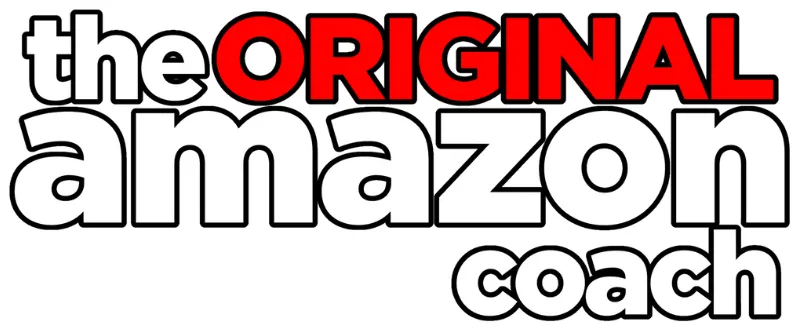
Amazon FBA Success: Navigating Product Selection for Profit and Sustainability
Embarking on an Amazon FBA journey can seem like navigating through a dense and mysterious jungle, with pitfalls of overspending and underperforming products lurking behind every tree. Isaac Kuhlman, known colloquially as the Original Amazon Coach, offers a wealth of strategies in a recent training series dedicated to helping Amazon sellers find their way to increased sales, profits, and sustainable income. Here we delve into the key elements of that expert guidance.
Key Takeaways:
Strategic Investment Planning: Understanding the importance of aligning product choices with budget constraints to prevent stock shortages and cash flow interruptions.
Data-Driven Research: Employing precise keywords and Amazon’s own metrics to determine the viability of products and forecast potential income effectively.
Launching Products for Maximum Impact: Considering upfront marketing costs and inventory planning based on projected sales to achieve an accelerated and profitable growth trajectory.
DOWNLOAD FREE BONUSES
The Art of Budgeting for Amazon FBA Success

Invest Wisely and Conserve Cash Flow
“You have to pick products that fit within your budget… You need to understand the cost of goods, the freight costs…your FBA fees within Amazon duties and taxes where applicable, launch costs…”
Optimal budget management is a critical element for enduring success in the Amazon FBA world. Kuhlman emphasizes the necessity for sellers to understand every associated cost involved in the product lifecycle, from inception to sale. Consider costs of goods, shipping from the factory to Amazon, FBA fees, taxes, launching, and ongoing ad expenses. Forecasting these costs sets a realistic framework by which sellers can pick products that complement their budget, thereby reducing the risk of stock depletion or excessive unsold inventory which leads to dead cash flow and stunted business growth.
A cautious yet informed approach to budgeting not only serves as a preparatory guardrail against financial mayhem but also informs key strategic decisions. For instance, a seller with a moderate budget might pursue lower-cost products with adequate sales velocity to ensure that funds remain for marketing and reorder. Such meticulous preparation and the decision-making process underscore the significance of accurate budgeting in the initial phase of launching an Amazon FBA business.
From Budgeting to Banking: Turning Profit Into Income
“The most important takeaway is that you have to invest properly. That means both money and time.”
Kuhlman doesn’t stop at budgeting; he leads sellers through a transformative journey from calculating potential profits to actual personal income. By setting clear income goals for both the business and its products, Amazon FBA entrepreneurs can tailor their strategies to reach desired financial outcomes. However, understanding the timeline for achieving these goals is critical as it aligns with both the investment of time and money. Entrepreneurs should recognize that substantial income may take time to materialize, planning and pacing their investments accordingly.
Mastering Product Selection with Exact Keywords and Customer Data

Utilizing Strong Data for Strong Products
“Use the main keyword to look up the data on Amazon and it’s really that simple.”
In a landscape teeming with competitors, accurate product research can catapult a business towards success. Kuhlman unravels the complexity of product selection by underscoring the use of precise keywords aligned with Amazon’s search algorithms and customer behavior. The right keywords can unleash powerful insights directly from Amazon’s databases, facilitating product choices based on verified data and actual customer search terms.
Utilizing data not just from third-party tools but also directly from Amazon, like the Product Opportunity Explorer for brand-registered sellers, ensures that sellers choose products with the highest potential for discoverability and sales. This approach creates a strong foundation for marketing strategies and stock management, as it offers a clear view of what customers are searching for and buying.
Forecasting and Planning for an Effective Product Launch
“To keep the product selling, you need to have a good return on cash flow to keep your ROI rolling over in a healthy way.”
Launching a new product entails more than just stocking up and waiting for sales. Kuhlman suggests a nuanced approach that includes thorough planning for marketing costs and a strategic rollout to ensure a product reaches its target sales pace without exhausting financial resources. By mapping out the expected costs, Amazon FBA owners can mitigate risks associated with running out of stock or over-investing in inventory, thus maintaining a healthy cash flow and achieving a worthwhile return on investment.
Tips for Long-Term Amazon FBA Product Success

Prioritizing Product Functionality and Financial Efficiency
“I think the most important thing I can say is to try to pick products that function great first and then design them for the Ikea deal clients. Fashion second so function first, fashion second.”
The concluding segment of Kuhlman’s guide serves as a beacon, offering actionable tips to avoid common pitfalls in product selection. Stay true to functionality over style; choose products that are less expensive and lighter to save on costs and fees; refrain from selling bundles or excessive color variations as they can complicate inventory and dilute profitability. This advice crystallizes Kuhlman’s strategy into practical steps, ensuring sellers focus on sustainable, profitable products that align with consumer needs and business capabilities.
These cornerstones of product selection, when applied with diligence and strategic insight, not only pave the way for immediate profits but also underpin a viable, growth-oriented Amazon business model.
In synthesizing these insights, an Amazon FBA seller is not simply conducting business; they are crafting a meticulous plan that allows them to outmaneuver common setbacks and catapult their business towards long-term profitability and sustainability. By integrating strategic investment planning, leveraging Amazon’s wealth of data, and adhering to carefully considered launching tactics, a seller can transform their Amazon venture from a gamble in a crowded marketplace to a calculated journey towards financial success.
